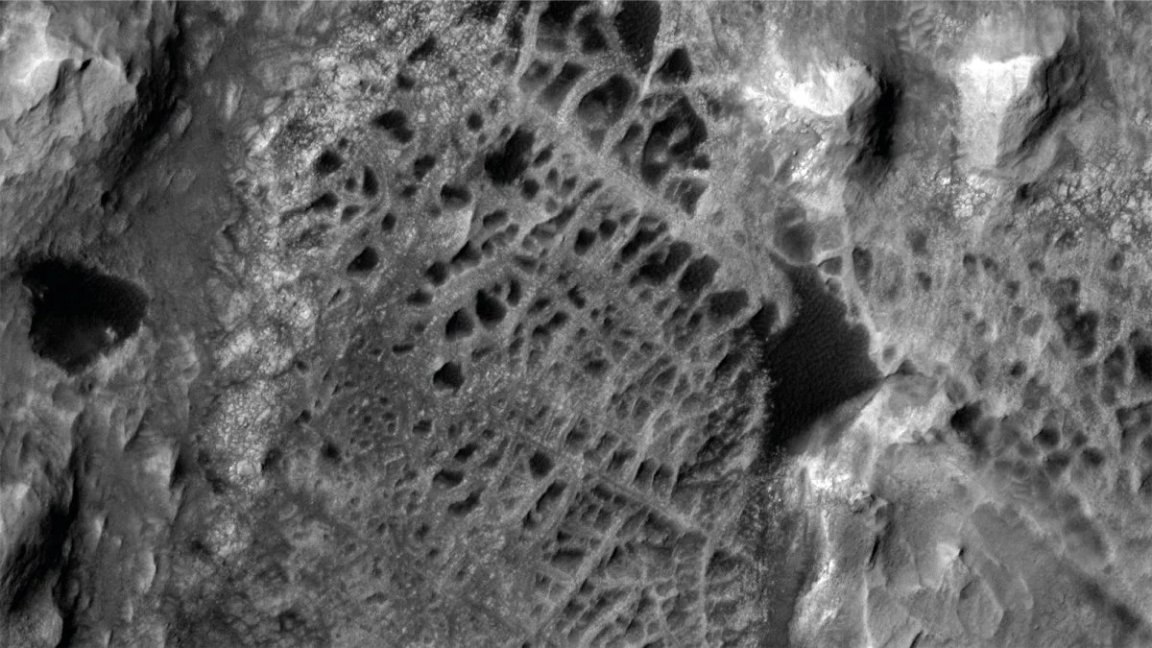
Spidey Sense
There’s no shortage of cool features of mysterious origins to be found on the surface of Mars, but the next one that NASA scientists have in their crosshairs is definitely one to keep your eyes peeled for.
Last week, the space agency announced that its seasoned Curiosity rover will embark on a lengthy journey to the foothills of Mount Sharp, where rising from the landscape is a sprawling, miles-long formation of spiderweb-like patterns, the likes of which has never been witnessed at such a scale on Earth.
Known as a “boxwork” — and which on the Red Planet has the distinction of being the boxwork — the intricate pattern of winding ridges is believed to have been formed by minerals deposited by groundwater billions of years ago, potentially offering clues about whether microbial life could have once existed on ancient Mars.
Until now, our best peek of the formation came from the Mars Reconnaissance Orbiter, which imaged the boxwork using its HiRise camera in 2006. If all goes to plan in the coming months, the Curiosity rover will give scientists their first ever up-close look at the webby protrusions.
Inside the Box
Lying in the shadow of Mount Sharp — officially Aeolis Mons — a three mile tall mountain in the center of Mars’ Gale Crater, the boxwork stretches for an incredible six to twelve miles in length, and owes its striking appearance not only to the prominence of its protrusions, but to the dark sand that fills its interstices.
Boxwork formations exist on Earth, but are typically found on cliffsides and in caves, according to the space agency. And none on our planet can claim to be nearly as large as the Martian ones.
The understanding is that they formed from the last vestiges of groundwater that flowed down from Mount Sharp, carrying minerals that hardened into fractures in surface rock. Over billions of years, the rock eroded away, revealing the minerals that once sought refuge in its nooks and crannies, that today stand on their own.
Liquid Lifeline
If Mars was ever capable of supporting life, evidence of its habitability may be preserved in the boxwork.
“These ridges will include minerals that crystallized underground, where it would have been warmer, with salty liquid water flowing through,” Kirsten Siebach, a planetary scientist from Rice University on the Curiosity team who is studying the Mars region, said in a statement. “Early Earth microbes could have survived in a similar environment. That makes this an exciting place to explore.”
The Curiosity rover is expected to reach its destination sometime in 2025.
More on Mars: Neil deGrasse Tyson Slams Elon Musk’s Plans for Mars Colonization